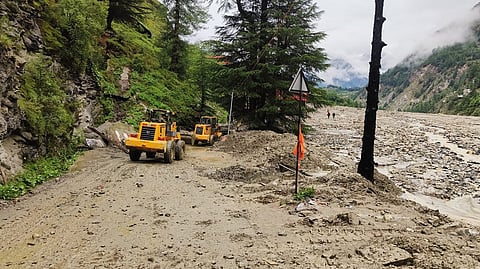The Himalayas are becoming monsoon graveyards
Uttarakhand has been devastated by an extreme monsoon, with rainfall 421% above average, leading to deadly mudslides and flash floods.
The Himalayas are increasingly vulnerable to such disasters due to climate change, which intensifies monsoon storms.
The lack of real-time weather surveillance exacerbates the situation, making these regions monsoon graveyards.
The state of Uttarakhand has been battered by an extreme monsoon spell, receiving a staggering 421 per cent above-average rainfall between August 5 and 6. On August 5 alone, Uttarkashi district, the epicentre of the deadly mudslide, recorded over 100 mm of rain in around seven hours, while areas surrounding the disaster location reportedly saw more than 400 mm rainfall within a few hours. This is nearly two-thirds of the total rainfall London Heathrow receives in an entire year.
Heavy rainfall, flash floods, and mudslides in the Himalayas are not uncommon—particularly during “break monsoon” periods. During these phases, monsoon activity weakens over Central India and shifts towards the Himalayas, funnelling vast amounts of moisture from both the Arabian Sea and the Bay of Bengal into these already vulnerable mountain zones. The hilly terrain and narrow river valleys of the Himalayas amplify the impact, turning heavy rain into sudden, violent flash floods and landslides.
The steep terrain around Dharali village, where the tragedy occurred, acted like a chute, accelerating mud and debris into a deadly rush downhill. Just like the 2024 monsoon tragedy in Wayanad in Kerala’s Western Ghats, the Himalayas too are becoming monsoon graveyards. What we are witnessing is the violent collision of an overheated, moisture-hungry atmosphere with fragile mountain ecosystems. Climate change is intensifying these extremes, since monsoon storms are now forming in a warmer atmosphere that holds and dumps far more moisture in short bursts, causing flash floods and landslides. What’s worse is that many of these regions lack real-time weather surveillance and effective early warning systems. As extreme events grow more frequent, we’re flying blind into disaster. The stakes are rising and ignoring them comes at a deadly cost.
Akshay Deoras is a research scientist at the University of Reading, United Kingdom
Views expressed are the author’s own and don’t necessarily reflect those of Down To Earth

